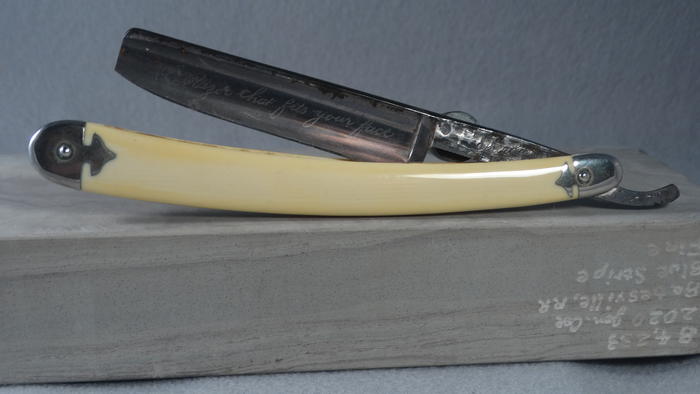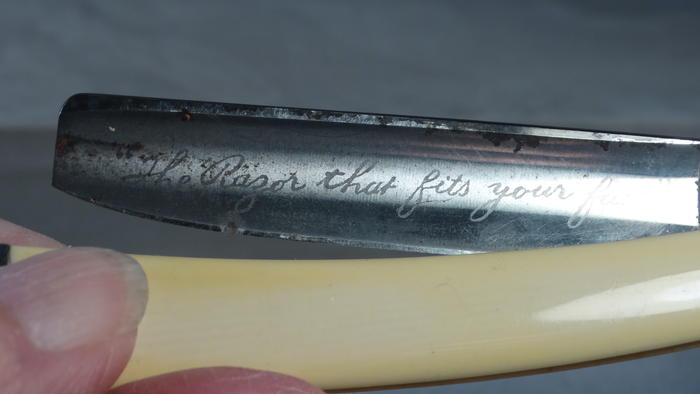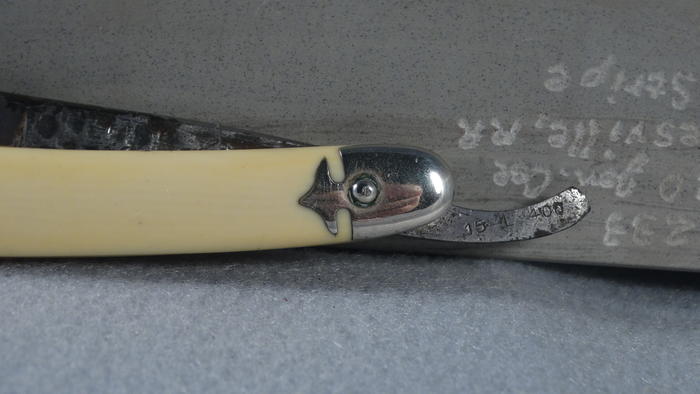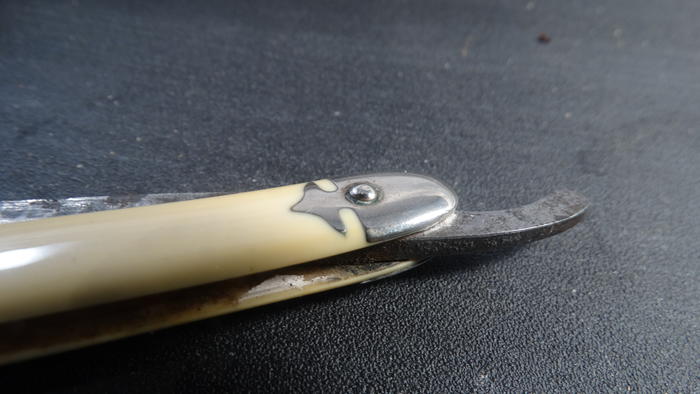Results 1 to 8 of 8
 13Likes
13Likes
Thread: Robeson rescale
Threaded View
-
04-18-2020, 10:18 PM #1
 Robeson rescale
Robeson rescale
I purchased this razor so I could reuse the scales.
The blade has a lot of tarnish could it be cell rot. Will litmus paper between the scales detect cell rot?
The pivot pins appear to be nickel silver. Where can I buy this material.(found on ebay) If you enlarge the last photo you will see that the pins are domed. How can I get the old pin out without damaging the bolster?
What advice can you offer? I have rescaled other razors, without bolsters. I have a dremel in a press that I can use or I can drill by hand.




Last edited by boz; 04-19-2020 at 12:42 AM. Reason: nickle silvr pins
A healthy skepticism of both old and new ideas is essential to learning.



 LinkBack URL
LinkBack URL About LinkBacks
About LinkBacks







 Reply With Quote
Reply With Quote